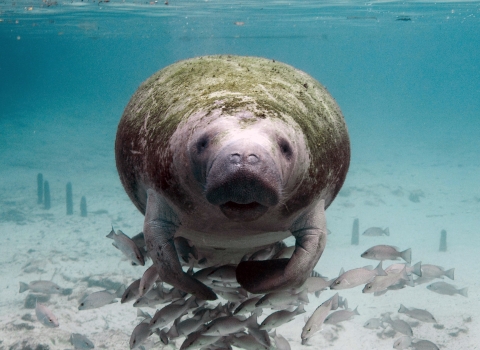Sacramento, Calif.— The U.S. Fish and Wildlife Service is proposing to list the San Francisco Bay-Delta distinct population segment of longfin smelt as an endangered species under the Endangered Species Act. Scientific analysis shows the Bay-Delta longfin smelt is in danger of extinction throughout its range. The Service is seeking public comment for 60 days after publication on the proposed rule in the Federal Register.
The Service completed a thorough review of the Bay-Delta population of longfin smelt, its habitat and current threats to determine whether ESA protections are warranted. Habitat loss due to the long-term reduction and alteration of freshwater flows into the San Francisco Bay estuary is the primary threat. Longfin smelt require specific water temperatures and adequate freshwater flows to survive.
“The longfin smelt may be small and unassuming, but they are an important part of the Bay-Delta estuary. The loss of this species would have a ripple effect throughout the ecosystem,” said Paul Souza, the Service’s Pacific Southwest Regional Director. “If this species is listed, the Service will work with partners to balance the needs of the species and communities that depend on Bay-Delta water resources. Additional funding for recovery actions can also be made available through the Service and our partners for continued conservation of the fish in California.”
Examples of potential recovery actions include habitat restoration, research, captive propagation and reintroduction, and outreach and education. Listing would also require federal agencies to consult with the Service when proposing projects within the Bay-Delta longfin smelt’s range and would enable the designation of critical habitat under the ESA.
The longfin smelt is 3.5 to 4.3 inches long with a translucent silver appearance on its sides and gut, while its back has an olive to iridescent pinkish hue. The fish lives about two to three years, in bays and estuaries along the coast from Northern California to Alaska. The Bay-Delta longfin smelt occupies only the San Francisco Bay Estuary and areas of the Pacific Ocean out to the Farallon Islands. Bay-Delta longfin smelt are anadromous, meaning older juveniles and adults can migrate to the ocean, but must return to fresh water to spawn.
Longfin smelt are currently listed as a threatened species under California’s Endangered Species Act, which prohibits unpermitted possession, purchase, sale or take of listed species. However, the state’s definition of take does not include harm, which under the federal ESA can include destruction of habitat.
The Bay-Delta longfin smelt decline is one of numerous indicators of environmental imbalance in the estuary. Threats to the longfin smelt are also imperiling other wildlife species, which similarly depend on clean, reliable water resources or the smelt as a food source. ESA protections will benefit the longfin smelt by raising awareness about threats to the species, catalyzing diverse partnerships on its behalf and inspiring creative approaches to balance water resources for people and wildlife. A healthier, more resilient ecosystem will better serve all the important functions of this vital resource including water supply, habitat, recreation and commerce.
The proposed rule will publish in the Federal Register on October 7, 2022. Comments will be accepted until December 6, 2022. Requests for public hearings must be submitted in writing no later than November 21, 2022.
In on how to submit comments is available at www.regulations.gov by searching under docket number: FWS-R8-ES-2022-0082.
You can also submit comments and information, or a hearing request in writing to: Public Comments Processing, Attn: FWS-R8-ES-2022-0082, U.S. Fish and Wildlife Service, MS: PRB/3W, 5275 Leesburg Pike, Falls Church, VA 22041–3803.
Media contact: Tamara Ward, tamara_ward@fws.gov, 916-217-7913
The U.S. Fish and Wildlife Service works with others to conserve, protect, and enhance fish, wildlife, plants, and their habitats for the continuing benefit of the American people. For more information about our work and the people who make it happen, visit https://www.fws.gov/cno/or connect with us via Facebook, Twitter, YouTube, and Flickr.



